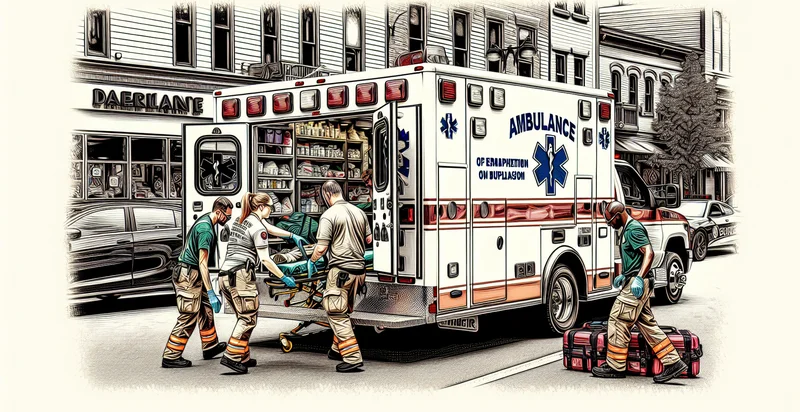Identify if an ambulance is loading
using AI
Below is a free classifier to identify if an ambulance is loading. Just upload your image, and our AI will predict if an ambulance is loading - in just seconds.

Contact us for API access
Or, use Nyckel to build highly-accurate custom classifiers in just minutes. No PhD required.
Get started
import nyckel
credentials = nyckel.Credentials("YOUR_CLIENT_ID", "YOUR_CLIENT_SECRET")
nyckel.invoke("if-an-ambulance-is-loading", "your_image_url", credentials)
fetch('https://www.nyckel.com/v1/functions/if-an-ambulance-is-loading/invoke', {
method: 'POST',
headers: {
'Authorization': 'Bearer ' + 'YOUR_BEARER_TOKEN',
'Content-Type': 'application/json',
},
body: JSON.stringify(
{"data": "your_image_url"}
)
})
.then(response => response.json())
.then(data => console.log(data));
curl -X POST \
-H "Content-Type: application/json" \
-H "Authorization: Bearer YOUR_BEARER_TOKEN" \
-d '{"data": "your_image_url"}' \
https://www.nyckel.com/v1/functions/if-an-ambulance-is-loading/invoke
How this classifier works
To start, upload your image. Our AI tool will then predict if an ambulance is loading.
This pretrained image model uses a Nyckel-created dataset and has 2 labels, including Ambulance Loading and Ambulance Not Loading.
We'll also show a confidence score (the higher the number, the more confident the AI model is around if an ambulance is loading).
Whether you're just curious or building if an ambulance is loading detection into your application, we hope our classifier proves helpful.
Related Classifiers
Need to identify if an ambulance is loading at scale?
Get API or Zapier access to this classifier for free. It's perfect for:
- Traffic Management System: The ambulance loading identifier can be integrated into smart traffic management systems to optimize traffic light sequences when an ambulance is preparing to depart. This ensures that emergency vehicles can access roads quickly, reducing response times and improving overall traffic flow.
- Emergency Dispatch Services: Emergency dispatch centers can use this technology to confirm when an ambulance is loading, allowing them to provide more accurate ETA updates for responders. This information can enhance coordination between emergency services and hospitals, streamlining the patient transfer process.
- Hospital Resource Allocation: Hospitals can leverage this function to monitor ambulance loading in real-time, which helps them prepare for incoming patients. By analyzing trends in loading times, hospitals can optimize staffing and resource allocation, improving patient care and reducing wait times.
- Smart City Infrastructure: Integrating the ambulance loading identifier into smart city infrastructure can enhance public safety by providing real-time data to monitoring systems. This data can help to prioritize emergency vehicle access in urban environments, ensuring quicker response by minimizing delays caused by traffic.
- Insurance and Claim Processing: Insurance companies can utilize this identifier to verify ambulance loading events when processing claims related to medical emergencies. Accurate data regarding the timing and location of ambulance activity can help speed up claim resolutions for both insured individuals and healthcare providers.
- Accident Scene Management: First responders at accident scenes can use this identifier to track when an ambulance is loading patients. This capability allows them to manage the scene more effectively and coordinate additional support or traffic control measures as necessary to ensure safety.
- Data Analytics for Emergency Services: Analytics platforms can utilize data from the ambulance loading identifier to identify patterns and trends in emergency service usage. By understanding peak loading times and common locations for incidents, agencies can improve strategic planning and resource distribution for future emergency responses.


